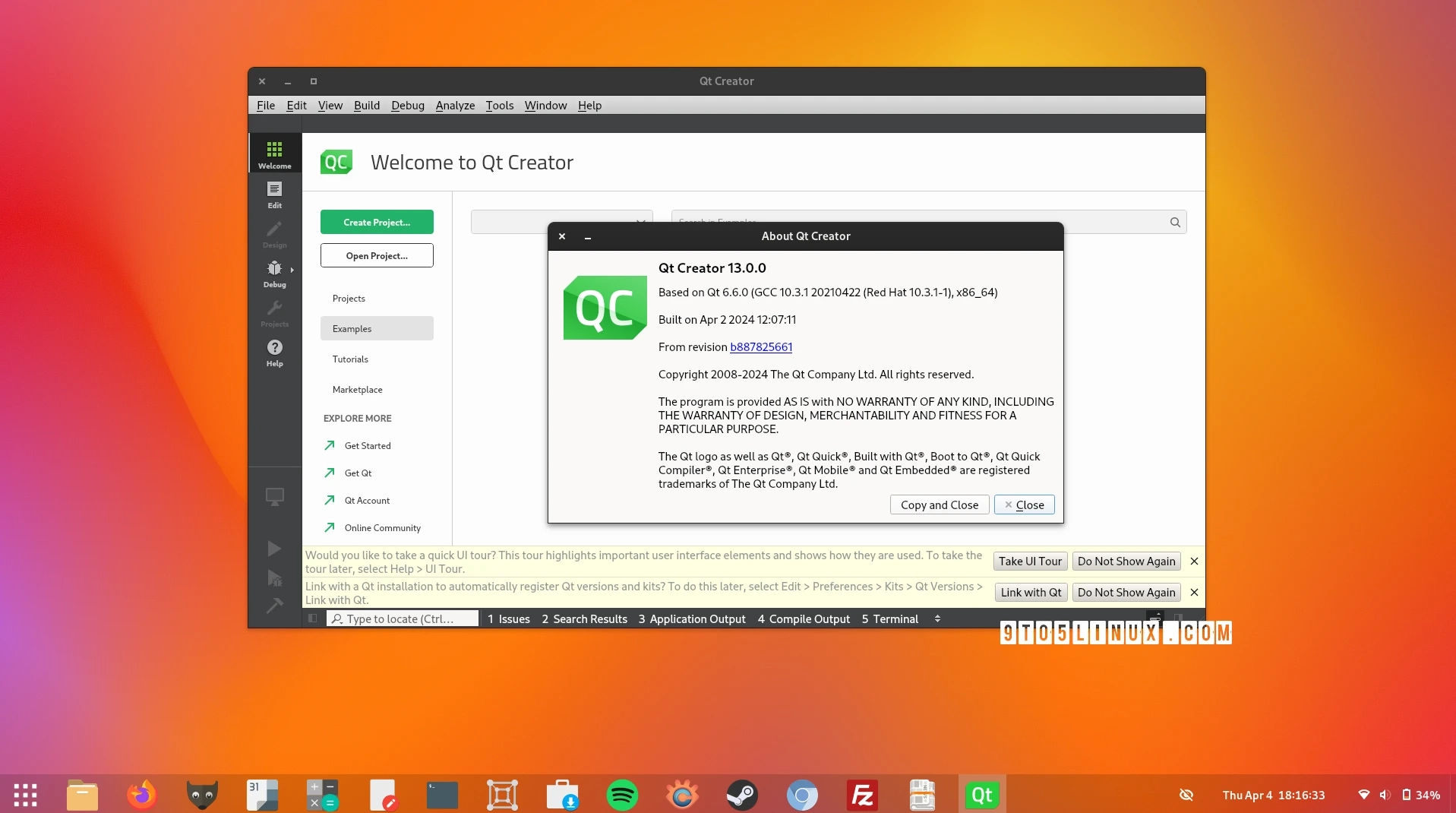Approximately four and a half months following the release of Qt Creator 12, we now have Qt Creator 13. This is the most recent stable version of this open-source, cross-platform, and no-cost IDE (Integrated Development Environment) that simplifies the development of GUI applications in Qt.
Key features of Qt Creator 13 consist of both offline and online installers for Linux on ARM, a redesigned visual style for the Welcome mode, preliminary support for iOS 17 devices, as well as enhancements to the Widget Designer and Debug mode docking UI.
“The ‘locked’ state is no more, and instead you can constantly drag panels around at the titles. For multiple panels in a vertical stack, we incorporated the option to temporarily collapse individual panels,” the blog announcement states.
Furthermore, Qt Creator 13 brings in support for creating, building, deploying, running, and debugging Qt 6 and CMake-based applications for devices that utilize the Qt Application Manager. It also lends support for creating Python kits for Python projects with the “Generate Kit” button in the Python interpreters preferences.
Moreover, Qt Creator has updated to support setting up of language servers for YAML, JSON, and Bash via npm. It now includes a feature that allows navigation from QML components to the corresponding C++ code in a project. The Clang Format settings have also been re-organized, with custom settings now available in a text editor with syntax checking.
In this latest release, the default build directory has been changed to a “build” subdirectory within the project sources. This change has been implemented to provide support for Docker, as well as for the CMake projects. You can modify the default build directory in Preferences > Build & Run > Default Build Properties > Default build directory.
To conclude, Qt Creator 13 introduces an innovative feature named “Vanished Targets”. It provides a list of missing kits for a project under a section in the Projects mode. From here, you can create a kit for your project and even copy the preserved build. This can then be deployed and run in various settings to a different kit.
Of course, there are numerous other small improvements and bug fixes in Qt Creator 13, so make sure that you study the full changelog if you want to know all about these changes. Meanwhile, you can download Qt Creator 13 right now from the official website for 64-bit AArch64 (ARM64) Linux systems.
Last updated 1 hour ago
